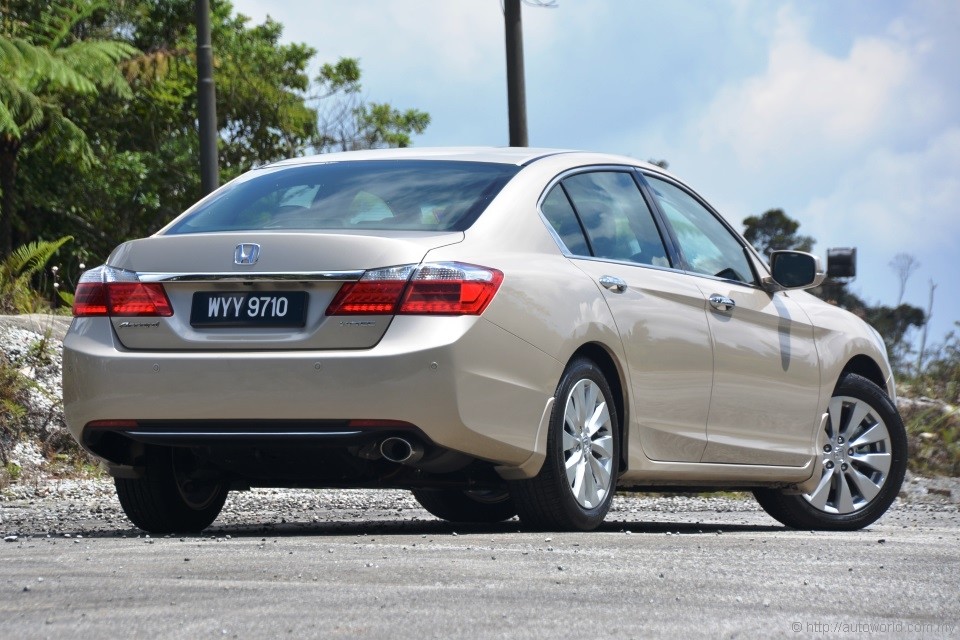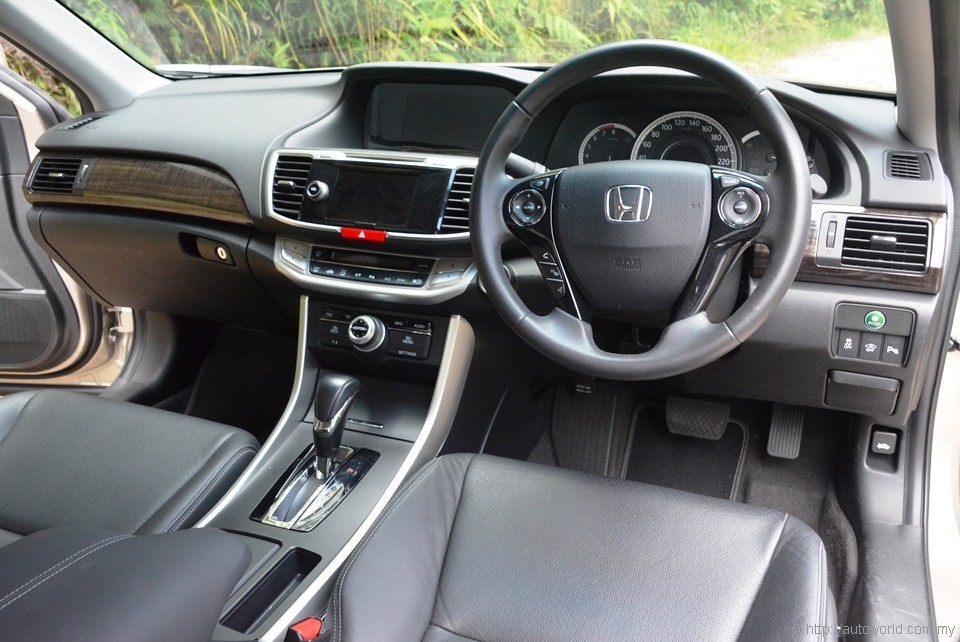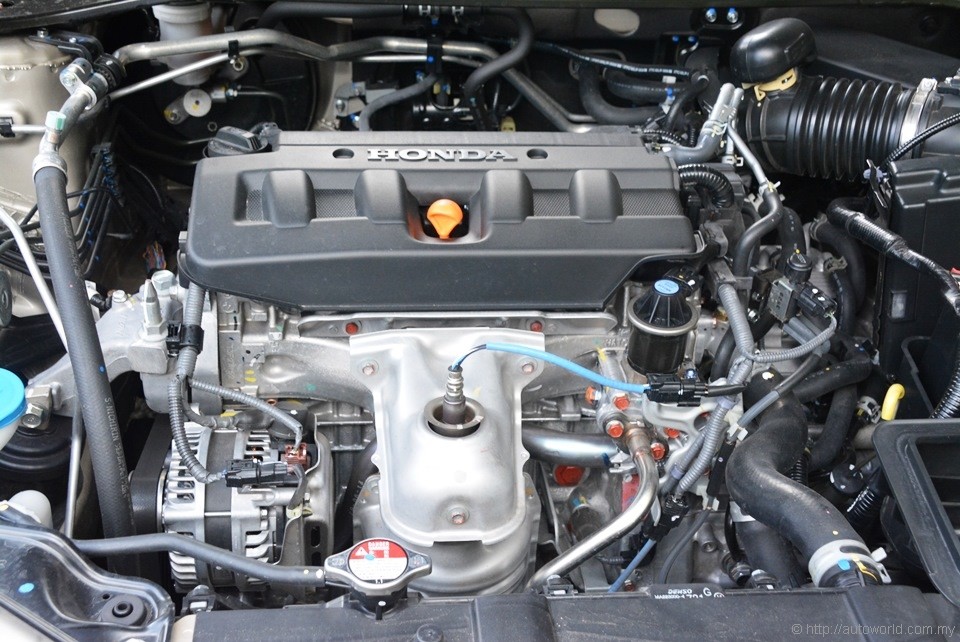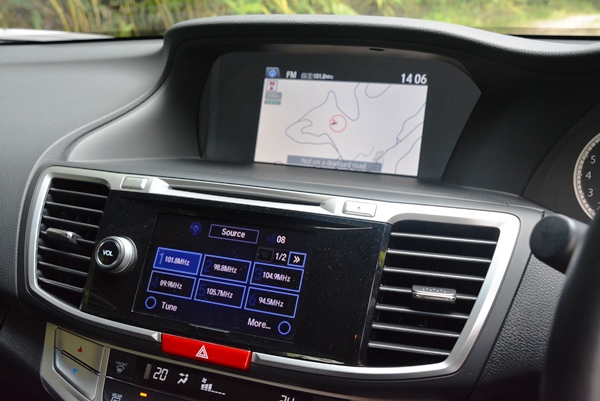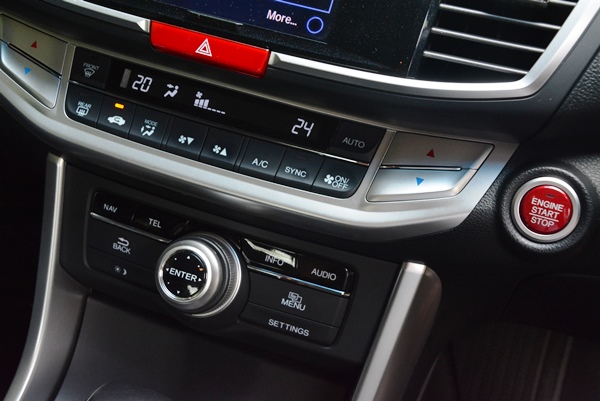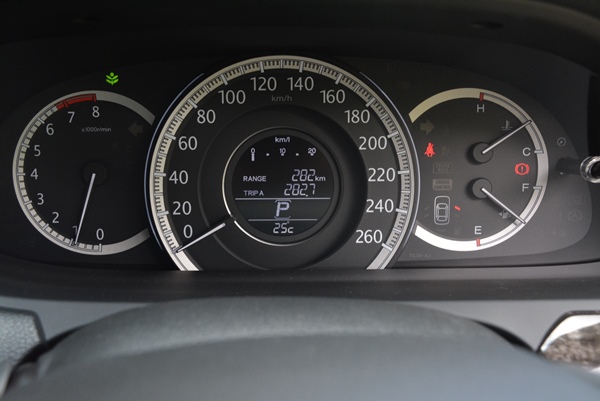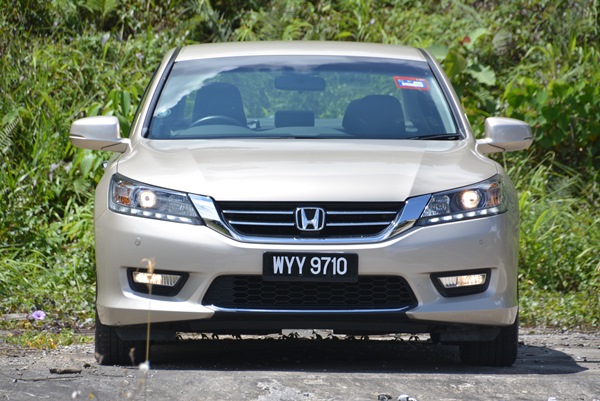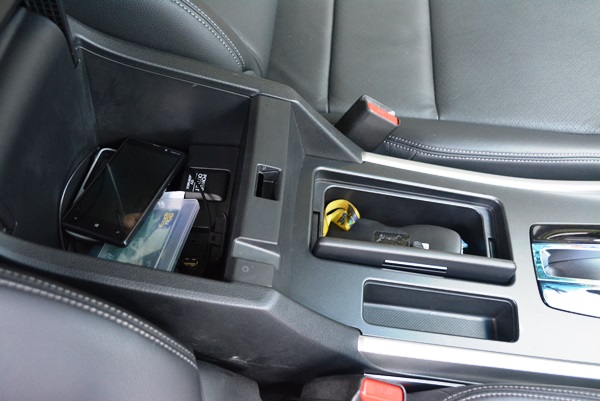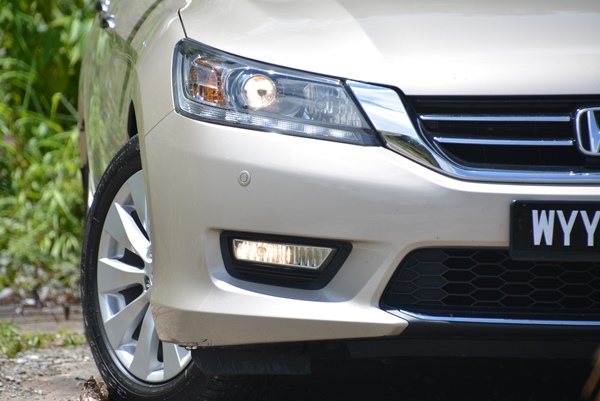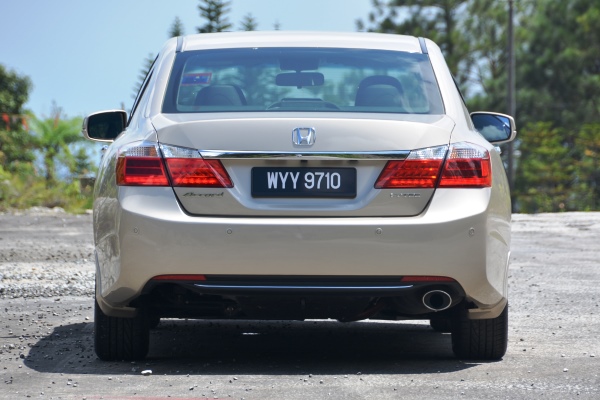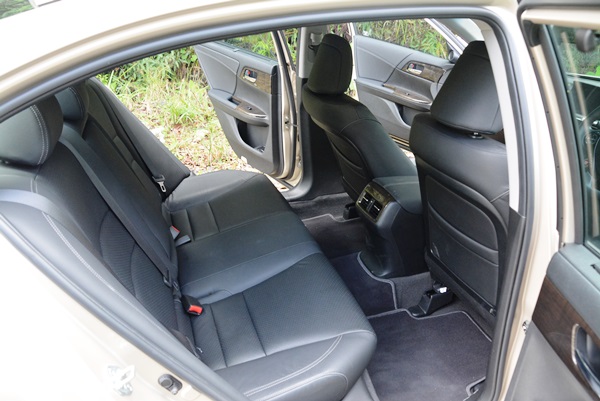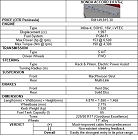Honda Accord 2.0 VTi-L Test Drive Review
A balanced product line-up must invariably include a strong mid-range model, and no other market is this rule more pertinent than the D-segment in Malaysia, where the 2.0-litre mid-spec models nicely converge around the RM150,000 mark. It is the segment’s sweet spot, and any D-segment car that wants to do well in Malaysia must pay attention to that crucial niche.
The formula is pretty straight forward – take the 2.0-litre variant, spec it with most of the bigger-engined variants’ equipment, and ensure that the RM150,000 threshold is not breached. This plays nicely into the psyche of most Malaysian buyers in willing to settle for lower engines but insisting on a high kit count. It also works well for company-registered cars, as vehicles between RM100,000 and RM150,000 qualify for the highest level of capital allowance deduction – noted automotive blogger Kenneth Sow sums it up nicely here.
 |
| Overall length is shortened, yet Honda was somehow able to deliver more cabin space. |
Amongst key D-segment players, the previous-gen Nissan Teana was notably let down by not offering the option of a better-appointed 2.0-litre model, whilst Toyota priced the Camry way too high for our liking. The Mazda6 is an interesting exception in that it starts off straight with a highly-specced 2.0-litre model due to local distributor Bermaz’s strategy in seeking to pitch its cars as more upmarket alternatives to its competitors. For the Honda Accord, the previous generation 2.0 VTi-L variant has become the byword for a good mid-range variant such that any competitor’s model is invariably described as ‘so-and-so brand’s version of the Accord VTi-L’.
Considering the mid-range variant’s importance, we therefore commence our latest cross-examination of the ninth-generation Honda Accord in its 2.0 VTi-L guise. Following up on earlier reviews from two separate media drives, first in Thailand then locally, we now take a closer look at Honda’s latest effort to dethrone the Camry in an extended review.
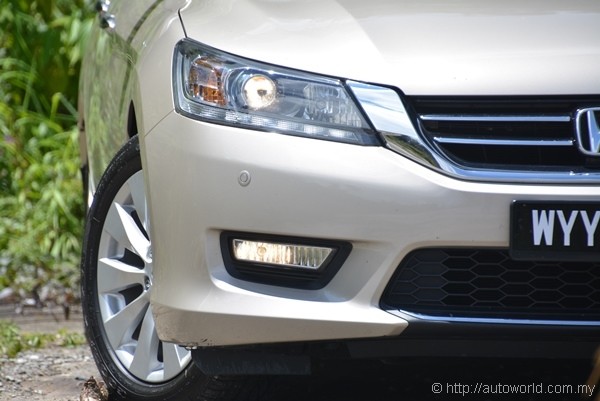 |
Prices & Variants
Like its predecessor, the latest generation Accord lines up with three variants starting with the base model 2.0 VTi at RM139,815.30 going all the way up to RM172,817.10 for the range-topping 2.4 VTi-L with the 2.0 VTi-L as tested here slotting nicely in between at RM149,815.30, all prices including insurance and registration in Peninsula Malaysia.
Priced lower than its predecessor, the 2.0 VTi gets things off to a fine start with an equipment manifest that includes stability control, ISOFIX mounts, dual zone climate control, rear air-con vents, LED daytime running lights, auto headlamps, and one-touch signals.
 |
| Dual zone climate control. Rotary knob serves as interaction point with upper screen. |
In not breaching the RM140k mark, the base model Accord is indeed a car of decent value, though we strongly advocate the RM10k step up to the 2.0 VTi-L which adds keyless entry, reverse camera, leather upholstery, cruise control, built-in hands free telephone support, electric driver seat adjustment with adjustable lumbar support, sunshade in the rear doors, and satellite navigation.
On paper, the 2.0 VTi-L establishes itself as a clear pick of the range. Equipment-wise, it checks all the crucial boxes; it asks a not unreasonable premium over the 2.0 VTi, and makes the bigger-engined 2.4 VTi-L, which we will review more closely at a later date, seem an unnecessary expense.
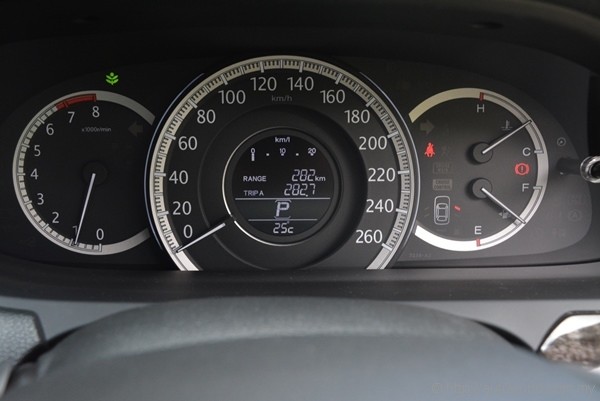 |
| Instrument cluster has 3D effect. |
Specifications
Much has been made of the 2.4 version’s new Earth Dreams engine replacing predecessor’s high-revving K24A that it is easy to overlook our 2.0-litre test car’s carry over R20A single-cam i-VTEC mill. Pushing outputs of 153hp and 190Nm, it soldiers on in an unchanged state; fine with us – it was a highly enjoyable motor to drive in the predecessor and we are more than happy for it to continue as is. Honda’s tried-and-trusted 5-speed automatic continues its proven partnership with the engine supplying drive to the front wheels.
A notable development of the new Accord is the switch from the previously-favoured and perceived superior double wishbone front suspension to a more conventional MacPherson strut layout. Rear continues with an independent multi-link layout, with stopping power provided by disc brakes at all four corners, ventilated in front. ABS is standard and parking brake is foot-operated, liberating useful space along the centre console, which we will get onto in a bit.
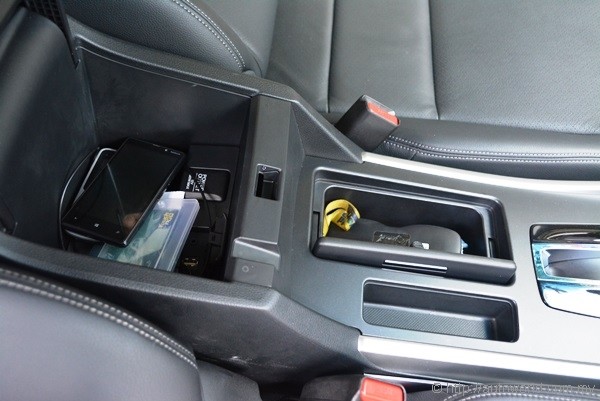 |
| Centre console has well sorted storage spaces. |
Design
At first glance, it would seem that Honda has opted to play a safe approach with the new Accord’s styling. The edgier and more expressive lines of the predecessor are toned down to give a more matured and grown-up look, giving it the effect of appearing bigger and more upmarket despite actually shrinking dimensions. As a whole, it is cleanly-styled and largely inoffensive to look at.
Progress is more remarkable inside, where Honda applies its much-lauded packaging prowess to introduce large-stride improvements to the Accord’s cabin, which is remarkably bigger despite being encased in a smaller body. The previous model’s busy and cluttered dashboard is thankfully history, and it is now replaced by a cabin layout that is not only friendlier to use, but far better built as well boosted by a revised selection of materials that feel significantly more premium than before.
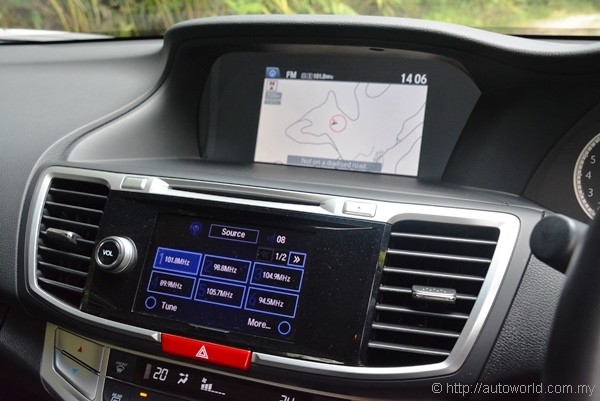 |
| The use of two screens seemed redundant at first, but the set up proved painless to use. |
Replacing the predecessor’s unsightly mish-mash of buttons on the centre stack is a cleaner and more effective four-tier control scheme that features not one but two screens – a larger 8″ TFT multi-info and sat nav display at the top level and a smaller control touch screen for infotainment at the second tier. Climate control is operated on the third tier, and the lowest tier handles browsing in the multi-info screen at the top. The usage of two screens would initially seem redundant to those with a taste for minimalism, but in operation, the entire set up proved remarkably intuitive to use and master.
In cabin storage is a Honda stronghold and as usual, the Accord does not disappoint. The crucial area along the centre console is adequately taken care of with lidded cup holders and armrest box both satisfyingly deep, generating useful storage volumes. The little slot adjacent to the cup holder proved to be a remarkably convenient location to drop parking cards and handphones. The glove box is less convincing, however, and the door pockets are average at best, although both are acceptable. Compared to the lower end models such as the Jazz and City, there is evident compromise in pragmatic usability for aesthetics. We don’t fully endorse such vanity, but at this end of the market, we can understand it.
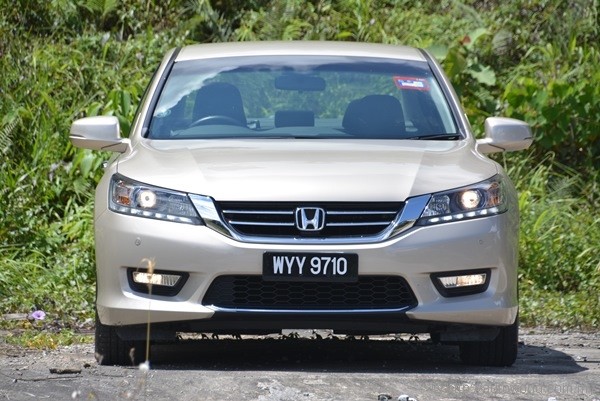 |
| Honda opted for a clean frontal look. 2.0-litre models get halogen headlamps only. |
Driving Experience
The previous-generation Accord was never found wanting as far as dynamic engagement was concerned, but it was less convincing with regards to refinement. Honda evidently got to work on this generation from that starting point, and went as far as calibrating an Active Noise Cancellation system that quietly hums equal but opposite sound waves to cancel out background cabin noises. This had the immediate effect of making the new Accord’s cabin a whole lot quieter than before, but no more so than the Nissan Teana or VW Passat.
Honda also successfully retained much of the previous model’s impressive agility and enhanced it with improved pliancy. As a result, the new Accord rides less harshly than before, but remains impressively competent around corners – tracking its selected line faithfully whilst keeping body roll well-managed. The new electric steering is more Passat than Mondeo – well-weighted, accurate, but almost non-existent with feedback.
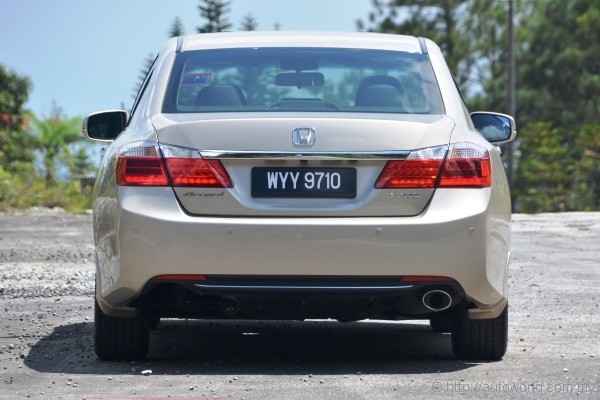 |
In the engine room, the 2.0-litre R20A continues where it left off in the predecessor model, delivering largely adequate performance and not averse to a good work out when extra speeds need to be coaxed. It emits all the right noises and is generally not averse to higher revs, although if evaluated for refinement, it probably is showing its age.
With modern transmissions regularly offering six or more speeds, Honda’s proven 5 A/T will seem like antiquated hardware on paper. The reality, however, is that Honda once again demonstrates that a good automatic transmission is not just about the sheer number of ratios but how you place them and how slickly it is calibrated. In the Accord, Honda’s in-house ‘box proved capable in the context of town and highway driving, but in more demanding conditions, the absence of manual control can be a little frustrating. Paddle shifters are available only in the 2.4; 2.0-litre models have three forward positions – D, D3, and L.
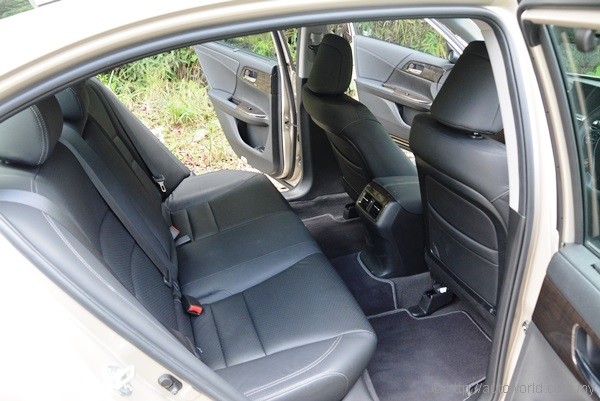 |
| Rear leg room is impressive and beyond adequate. |
Verdict
Its appearance may suggest otherwise, but the new Accord is a revolutionary product from Honda, and one that is well-equipped to assume class leadership. The dubious Competition Act mean that car companies can no longer disclose sales data of individual models, but word in the market is that the Accord is now outselling the Camry; and even if it hasn’t, it should be getting close.
Zooming into the 2.0-litre variant as tested, the smaller engine, as before, continues to offer adequate and respectable performance that should satisfy the majority of buyers. Equipment is more respectable now too, with the 2.0 VTi offering buyers on a budget a more dignified entry to the range, although it is the VTi-L model reviewed here that should merit the most serious consideration.
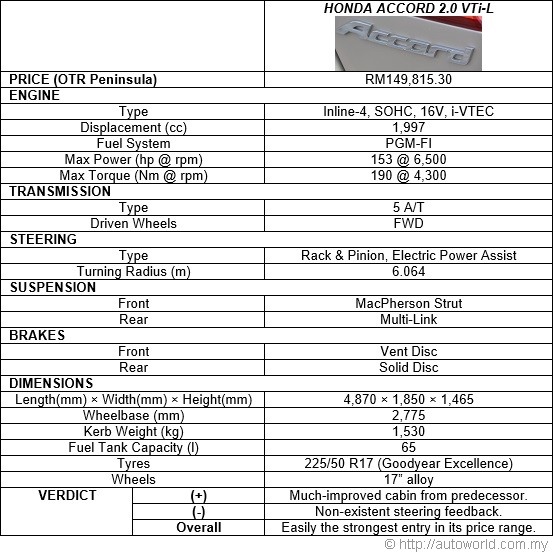 |





